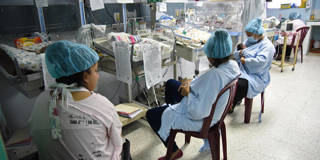How Wide Are Latin America’s Health Inequalities?
New research shows that the disease burden in Latin America and the Caribbean is disproportionately borne by the most disadvantaged, especially in childhood and adolescence. But the complex pattern of these disparities suggests that policymakers must address the broader social determinants of health outcomes.

BUENOS AIRES – Health is much more than a personal matter; it is essential to a society’s well-being and productivity. But achieving equitable health outcomes for all remains a challenge. This is especially true in Latin America and the Caribbean (LAC), a region beset by extreme and persistent inequalities.